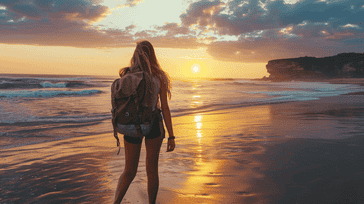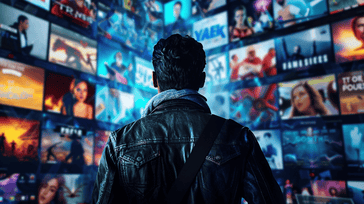
Welcome to our guide on travel photography! If you're an avid traveler seeking to document your adventures in picture-perfect style, you've come to the right place. In this article, we will provide you with expert tips on how to capture those special moments that will leave a lasting impression. Whether you're exploring stunning landscapes, immersing yourself in different cultures, or embarking on thrilling escapades, these tips will help you create stunning images that reflect the essence of your travel experiences.
Key Takeaways:
- Choose the right equipment to maximize the quality of your travel photos.
- Experiment with different composition techniques to create visually captivating images.
- Understand the importance of lighting and timing in setting the mood of your photos.
- Practice and continuously improve your skills to capture moments that will last a lifetime.
Essential Equipment for Memorable Travel Photos
Hiking through breathtaking landscapes, exploring vibrant cities, or immersing yourself in local culture—travel photography allows you to capture unforgettable moments that will stay with you forever. To ensure you can freeze these memories in stunning detail, having the right equipment is essential. In this section, we'll introduce you to the must-have gear that will elevate your travel photography to new heights.
Cameras
Investing in a high-quality camera is the first step towards capturing memorable travel photos. While smartphones can take decent shots, they often lack the versatility and image quality of dedicated cameras. Consider options like the Canon EOS R5 or the Sony Alpha a7 III. These mirrorless cameras offer exceptional image resolution, low-light performance, and advanced autofocus capabilities to ensure your photos are sharp, vibrant, and full of detail.
Lenses
Pairing your camera with the right lens is crucial for capturing different types of travel photography. A versatile all-in-one zoom lens like the Tamron 28-300mm f/3.5-6.3 Di VC PZD allows you to capture a wide variety of subjects, from sweeping landscapes to distant landmarks. Additionally, a prime lens such as the Canon EF 50mm f/1.8 STM is perfect for portraits and low-light situations, offering a shallow depth of field and beautiful bokeh.
Tripods
When it comes to travel photography, stability is key for capturing sharp and well-composed shots. Investing in a lightweight and portable tripod like the Manfrotto Befree Advanced Carbon Fiber will help eliminate camera shake and allow for long exposure photography or self-portraits. Look for tripods with adjustable heights and quick-release mechanisms to enable easy setup and smooth panning.
Accessories
Enhance your travel photography experience by packing essential accessories that can significantly improve your images. A sturdy camera bag like the Lowepro ProTactic BP 450 AW II will protect your gear from the rigors of travel while providing easy access to your equipment. Additionally, carrying spare batteries, memory cards, filters, and a cleaning kit can ensure you never miss a shot and keep your gear in optimal condition.
| Camera | Lens | Tripod | Accessory |
|---|---|---|---|
| Canon EOS R5 | Tamron 28-300mm f/3.5-6.3 Di VC PZD | Manfrotto Befree Advanced Carbon Fiber | Lowepro ProTactic BP 450 AW II |
| Sony Alpha a7 III | Canon EF 50mm f/1.8 STM |
Remember, the right equipment can make a world of difference in capturing and preserving the beauty of your travel adventures. Invest wisely, choose gear that suits your needs, and get ready to create unforgettable memories through stunning travel photography.
Composition Techniques to Elevate Your Travel Photos

Composition is a fundamental element in creating visually stunning travel photos. By applying certain techniques, you can transform ordinary snapshots into captivating images that truly capture the essence of your destination. In this section, we'll explore various composition techniques that will elevate your travel photos to new heights.
Rule of Thirds
One of the most commonly used composition techniques is the rule of thirds. Instead of placing your subject directly in the center of the frame, imagine dividing the image into a 3x3 grid. Position your subject along one of the imaginary lines or at one of the intersections to create a more balanced and aesthetically pleasing composition.
Leading Lines
Leading lines are natural or man-made lines within a scene that guide the viewer's eye towards the main subject. They can be roads, fences, pathways, or even the curves of a river. By incorporating these lines into your frame, you can create depth, movement, and a sense of direction in your photos.
Framing
Framing is the technique of using elements within the scene to create a natural frame around your subject. It adds depth and context to your photos, drawing the viewer's attention to the main subject. Look for archways, doorways, windows, or even branches and foliage to frame your subject and enhance the visual impact of your images.
Perspective
Experimenting with different perspectives can transform ordinary scenes into extraordinary compositions. Instead of shooting from eye level, try getting down low to capture a unique viewpoint or climb to higher ground for a bird's-eye view. Changing your perspective can provide a fresh and interesting take on familiar landmarks or landscapes.
By incorporating these composition techniques into your travel photography, you can elevate your images and create a visual story that captures the essence of your experiences. Remember, practice and experimentation are key to developing your own unique style. So grab your camera, explore your surroundings, and let your creativity soar!
Lighting and Timing: Enhancing the Mood of Your Travel Photography
When it comes to travel photography, lighting and timing are crucial elements that can significantly enhance the mood and atmosphere of your images. The right lighting can transform an ordinary scene into a breathtaking masterpiece, while timing allows you to capture the perfect moment. In this section, we will explore techniques to make the most of natural and artificial lighting and how to utilize different times of the day to create stunning photos that truly evoke the essence of your travel experiences.
Mastering Natural Lighting
Natural lighting, such as sunlight, often provides the most captivating and dynamic results in travel photography. Here are a few tips to help you harness the power of natural light:
- Golden Hour: Capture the soft, warm glow of sunrise or sunset, known as the "Golden Hour." This magical time offers perfect lighting conditions with long, rich shadows and a soft, golden hue.
- Backlighting: Position your subject in front of the light source to create a stunning silhouette or add a beautiful halo effect.
- Diffused Light: Overcast days provide soft, diffused light that is ideal for capturing details and minimizing harsh shadows. Embrace these conditions by focusing on close-ups or shooting in shaded areas.
Utilizing Artificial Lighting
While natural lighting is often preferred in travel photography, there are situations where artificial lighting can be beneficial in enhancing the mood. Here are a few techniques to consider:
- Flash Photography: Use an external flash to fill in shadows or add a pop of light to your subject.
- String Lights: Create a magical ambiance by incorporating string lights into your composition. They can add warmth and a touch of romance to your photos, perfect for capturing night scenes or cozy indoor settings.
Seizing the Right Timing
Choosing the right time to capture your travel photos can significantly impact the mood and storytelling aspect of your images. Consider the following:
- Dawn and Dusk: The hours around sunrise and sunset offer soft, warm lighting and vibrant colors. These times are especially enchanting for landscapes, cityscapes, and portraits.
- Blue Hour: The period before sunrise and after sunset, known as the "Blue Hour," provides a serene and ethereal atmosphere with deep blue skies. This time is perfect for capturing architectural details and urban scenes.
- Nighttime: Embrace the opportunity to experiment with long exposures and capture the mesmerizing city lights or starry night skies. Night photography can add a sense of drama and mystery to your travel photos.
By understanding the role of lighting and timing, you can elevate the mood and atmosphere of your travel photography. Experiment with different techniques and be mindful of the natural light available in your surroundings. Remember, each destination has its own unique lighting conditions, so adapt and embrace them to create truly captivating images.
Conclusion

As we come to the end of our guide on travel photography tips, it is important to remember that practice and experimentation are key to improving your skills in this art form. Each journey presents a unique opportunity to capture and portray captivating stories through your images. By following the techniques and insights shared in this guide, you can ensure that the moments you capture will truly last a lifetime.
Take the time to familiarize yourself with your equipment and explore different composition techniques. Pay attention to lighting and timing, as they have a significant impact on the mood and atmosphere of your photos. Remember to be patient and persistent in your pursuit of the perfect shot, as it often takes time and effort to achieve the desired results.
Whether you're a seasoned travel photographer or just starting out, continuously honing your craft is essential. Don't be afraid to experiment with new approaches and push the boundaries of your creativity. With dedication and passion, you can create stunning images that not only capture the beauty of the places you visit but also tell compelling stories that resonate with your audience.
FAQ
What is travel photography?
Travel photography is the art of capturing moments and documenting experiences while traveling. It involves capturing the essence of a destination, its people, landscapes, and culture through photographs.
Why is travel photography important?
Travel photography allows you to preserve memories and share your experiences with others. It enables you to tell stories, evoke emotions, and showcase the beauty of different places around the world.
What equipment do I need for travel photography?
The essential equipment for travel photography includes a camera, a selection of lenses, a sturdy tripod, and additional accessories such as extra batteries, memory cards, and filters.
Do I need a professional camera for travel photography?
While professional cameras can offer advanced features and better image quality, you don't necessarily need one to capture great travel photos. Many smartphone cameras and compact cameras today have impressive capabilities and can produce stunning results.
What are some composition techniques for travel photography?
Some composition techniques that can elevate your travel photos include the rule of thirds, leading lines, framing, perspective, and using foreground interest. These techniques help create visually pleasing and balanced images.
How can I enhance the mood of my travel photography through lighting?
Lighting plays a crucial role in setting the mood of your travel photos. Utilize golden hour or blue hour lighting for soft and warm tones, experiment with silhouettes during sunrise or sunset, and embrace the dramatic effects of harsh shadows and contrast in different lighting conditions.
When is the best time to take travel photos?
The best times for photography are during the golden hour (shortly after sunrise or before sunset) when the light is soft and warm. However, don't limit yourself to specific times as different lighting conditions throughout the day can create unique and compelling images.
How can I improve my travel photography skills?
The key to improving your travel photography skills is to practice regularly, experiment with different techniques and styles, learn from other photographers, and continuously challenge yourself to see the world from fresh perspectives. Traveling to new places and immersing yourself in different cultures can also provide ample inspiration.







